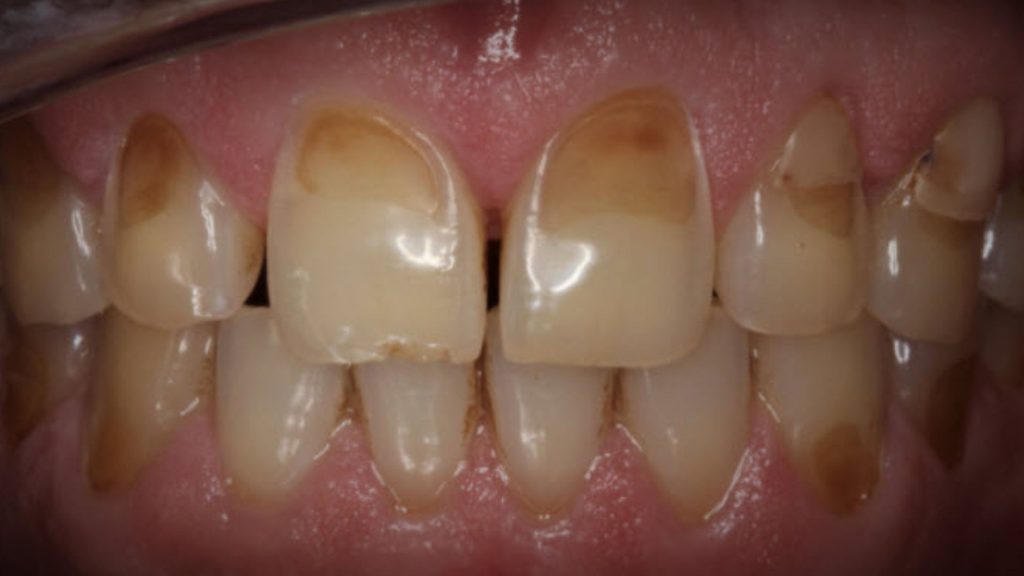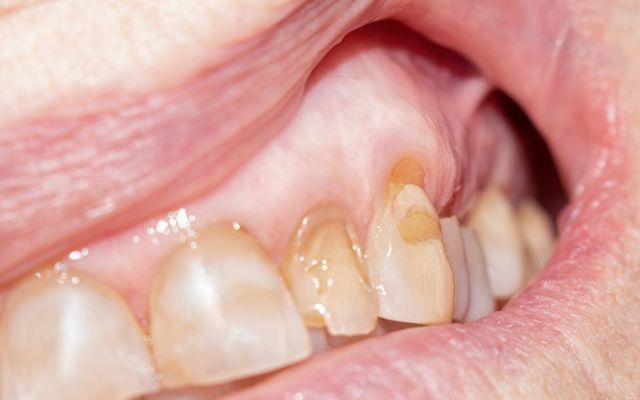Tooth enamel is the hardest substance in the human body, acting as a protective shield for your teeth. It helps guard against damage from chewing, biting, and exposure to acidic foods and drinks. However, enamel loss is irreversible, and once it wears away, your teeth become more vulnerable to decay, sensitivity, and structural damage. If you’re wondering what teeth without enamel look like, how to recognize enamel loss, and what you can do to prevent or restore it, this guide provides essential information to help you protect your smile.
What Happens When Tooth Enamel Wears Away?
Enamel loss exposes the dentin layer underneath, leading to increased sensitivity, discoloration, and a higher risk of cavities. Without enamel, teeth lose their natural protective barrier and become more vulnerable to external damage.
Stages of Enamel Erosion
- Mild Enamel Loss: Slight thinning of enamel, minor tooth sensitivity, mild discoloration.
- Moderate Enamel Loss: Teeth appear more yellow, sensitivity increases, rough or uneven surfaces develop.
- Severe Enamel Loss: Visible transparency on the edges, increased chipping, persistent pain, and a higher risk of decay.
- Ignoring enamel loss can lead to severe tooth damage, infections, and even tooth loss. That’s why early detection and intervention are crucial.


Causes of Tooth Enamel Loss
Even though enamel is incredibly strong, certain factors contribute to its erosion over time. Understanding the causes can help you take proactive steps to protect your teeth.
1. Acidic Foods and Beverages
Excessive consumption of soda, citrus fruits, energy drinks, and wine weakens enamel over time. The acids soften the enamel, making it prone to erosion. Drinking acidic beverages through a straw and rinsing your mouth afterward can help reduce acid exposure.
2. Teeth Grinding (Bruxism)
Grinding or clenching your teeth, especially at night, can gradually wear down enamel. If left untreated, bruxism can cause tooth fractures and increased sensitivity. A custom nightguard can help protect your teeth from further wear.
3. Poor Oral Hygiene
Brushing too hard or using a hard-bristled toothbrush can cause mechanical wear on enamel. Using a soft-bristled toothbrush and a gentle brushing technique helps protect enamel while maintaining oral hygiene.
4. Acid Reflux and Medical Conditions
Conditions such as GERD, bulimia, and chronic vomiting expose teeth to stomach acid, which accelerates enamel erosion. Managing these conditions with medical support can minimize damage.
5. Genetics
Some people naturally have weaker enamel due to genetics, making them more prone to erosion despite good oral hygiene.
Recognizing Tooth Enamel Loss
Early detection can prevent more serious dental problems. If you notice any of these signs, it’s time to see your dentist.
Symptoms of Enamel Erosion:
- Yellowing of Teeth: Thinning enamel exposes the dentin, making teeth appear darker.
- Tooth Sensitivity: Discomfort when consuming hot, cold, or sweet foods.
- Chipping and Roughness: Weakened enamel makes teeth more prone to breakage.
- Translucent Edges: Severe enamel erosion may cause the edges of teeth to appear see-through.
- Flattened or Worn Teeth: A sign of mechanical wear due to grinding or chewing.


Can Tooth Enamel Be Restored?
No, lost enamel cannot grow back, but there are treatments available to strengthen and protect your teeth. The right approach depends on the severity of enamel loss, ranging from fluoride treatments for minor cases to crowns for advanced damage.
Whileyeatments available to strengthen and protect your teeth. The right approach depends on the severity of enamel loss, ranging from fluoride treatments for minor cases to crowns for advanced damage.
Mild Enamel Loss
If your enamel is only slightly worn, strengthening the remaining enamel is key. Fluoride treatments, such as professional fluoride varnish or gels, help remineralize weak areas and protect against further decay. Additionally, remineralizing toothpaste containing fluoride and calcium phosphate can aid in restoring minor enamel damage by reinforcing the tooth structure.
Moderate Enamel Loss
When enamel erosion progresses, structural reinforcement is necessary to prevent further damage. Dental bonding is a common solution, where a tooth-colored resin is applied to cover worn areas, restoring the tooth’s appearance and function. Another option is dental veneers, which are thin porcelain or composite shells placed on the front surface of teeth. Veneers not only protect weakened enamel but also improve aesthetics by enhancing tooth color and shape.
Severe Enamel Loss
When enamel is extensively damaged, protective restorations that cover the entire tooth are recommended. Dental crowns are custom-fitted caps that completely cover the affected tooth, restoring its strength and protecting it from further wear. For cases where enamel loss affects only specific areas of a tooth, onlays and overlays can be used as a more targeted alternative to crowns, preserving more of the natural tooth structure while offering enhanced durability.
Preventing Tooth Enamel Loss
Although enamel cannot grow back, you can take steps to prevent further erosion and protect your teeth from future damage.
- Limit acidic foods and drinks
- Use a soft-bristled toothbrush
- Maintain good oral hygiene
- Wear a nightguard
- Stay hydrated
Choosing the Right Dental Provider for Enamel Restoration in Bassendean
If you suspect you have enamel loss, visiting a dentist early can help prevent further damage and restore your smile. Choosing a dental provider within your health insurance network ensures you receive the most benefits for your treatment. For those in Bassendean, Bayswater, Ashfield, Eden Hill, Guildford, Caversham, Beechboro, Lockridge, Kiara, Embleton, Morley, and Maylands, Spring Orchid Dental Bassendean is a trusted provider for HBF, nib, and DHS patients. Their friendly and experienced team offers comprehensive enamel restoration treatments, including fluoride therapy, bonding, veneers, and crowns.
Protect Your Enamel Before It’s Too Late
Enamel loss is a serious dental concern, but with the right care, you can prevent further damage and restore your smile. By recognizing the early signs of enamel erosion, making smart dietary choices, and visiting your dentist regularly, you can maintain strong, healthy teeth for years to come. If you’re experiencing tooth sensitivity, discoloration, or weakened enamel, don’t wait until it’s too late. Schedule an appointment with our Bassendean dentist today to explore your treatment options and protect your teeth from further damage.
FAQs About Tooth Enamel Loss
Can teeth function without enamel? Teeth without enamel are highly vulnerable to damage, sensitivity, and decay. Without proper treatment, they may become painful and prone to breaking.
What do teeth look like without enamel? Teeth without enamel may appear yellow, translucent, rough, or pitted. The lack of a protective layer makes them more susceptible to staining and sensitivity.
Can enamel grow back naturally? No, enamel cannot regenerate once it’s lost. However, fluoride treatments and professional dental care can help strengthen and protect existing enamel.
This article is for informational purposes only. You should visit a dental professional to accurately assess your condition. This article does not replace professional dental advice. Book an appointment with our dentist today to receive a comprehensive evaluation and personalized treatment options.





